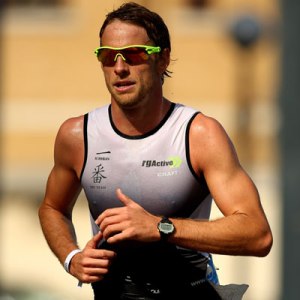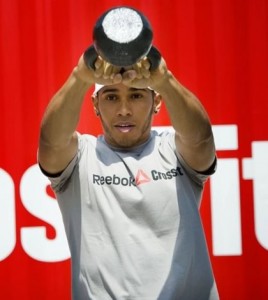Brought to you by Mark Palk (@mark_palk) of www.revealyourinnerhealth.com
Editor’s note: TJ13 asked Mark to analyse driver fitness, both mentally and physically, in order to be able to push themselves to the extremes they do. In the first of a series of articles Mark takes a more general look at driver fitness.
As a gym junkie who continuously watches rugby, boxing and likes to keep fit, I never gave much thought as to the training processes to become a Formula 1 driver until recently. After talking to a friend, and much rigorous chatting concerning Formula 1 and the so-called “sciences” behind it many questions started to enter my mind; “what sort of training do they even do? I mean sitting in a car for 75 laps can’t be that bad can it?”
Immediately as I asked myself these questions the factors of the weight of the car, the G-force and all sorts of variables to take into consideration suddenly dawned on me.
For this article, strictly for fitness reasons, I am going to stick to two of the most prolific Formula 1 athletes of today- Jenson Button and Lewis Hamilton. As a World Champion Button has a very rigorous training regime from the very basic to the slightly confounding, and uses a variety of different types of training to keep him in optimum racing condition. These training regimes also come from Button’s hobby of competing in triathlons as well as his passion of those fast Formula One cars. So, what does it take to maintain a man like Jenson?
Strength Training- A huge part to Button’s training regime is strength training (this seemed odd to me as I had never considered it a necessity) however, in a Formula 1 vehicle that can go from 170mph to close to 0mph in 3 seconds, strength is paramount in controlling the vehicle. It is easy to forget the G-forces these drivers are experiencing; up to 6G in some braking zones.
In an interview conducted by Men’s Health with Mike Collier- Button’s personal trainer and close friend- he admits that for prehabilitation purposes it is ESSENTIAL that lots of strength training is integrated into his every day routine. For those of you who do not know what prehabilitation is, in a nutshell, it is the preparation for injury prevention. Of course with his head rattling around in such a confined space in the small cockpit with all the G-forces doing their work, it is not surprising that the neck can be very vulnerable to our racing driver. Button’s training regimes and the organisation of such regimes happen to be some of the most intense around, incorporating strength training at the beginning of a training season. His pre-race mind set and routine is in place in order to strengthen the muscles in the body, especially the core and aligning back muscles. Hamilton also has his own strength tips when it comes to maintaining a race-worthy physique. His biggest strength and conditioning tip being that he sits on the end of a weight bench, almost falling off and completing multiple sets of multiple reps of weighted sit ups without using his legs. This increases the stability in the core muscles and strengthens the lower back muscles, helping him maintain race position more easily in the car.
Fun Fact: The average F1 corner will place 3 times times the weight of the head upon the neck muscles when negotiating corner exit
Cardio/Endurance Training- As you would expect from basic physics, the cars (and drivers) need to be as light as possible so that the car go as fast as possible, thus cardiovascular and endurance training regimes are considered staple when it comes to this type of athlete. Mid training season normally comes after doing most of the strength training, which is when Button embarks on his cardiovascular and endurance regimes. What better way to do this than triathlons?
When he is not in the hot seat of a racing car, Button usually likes to fill up his schedules competing in world renowned triathlons and marathons. He finished his first complete marathon in Brazil in only 3 hours, something that most people would only be able to call an aspiration. Lewis Hamilton has also spoken about a 4 1/2 hour hike up a mountain in the alps only to run back down it. “In deep snow at points” admits Hamilton in an interview Men’s Fitness magazine. Hamilton also adds how crossfit is an essential part to his training regimes, incorporating lots of exercises using body weight and other unconventional objects in order to work out the body, especially the core. He affirms, with reference to crossfit the following, in an interview with the Daily Mail.
“I use medicine balls to improve my core strength. I sit in the racing position and the medicine ball is thrown at me in all different directions”



Interesting read Mark. Looking forward to the rest of the series.
Really interesting article thanks Mark – I’ll look forward to your next one:)
I can remember reading about when Kimi Raikkonen first tested for Sauber that he was only able to do 4 laps at a time in the car because of the stress on his neck muscles which he wasn’t used to. I would presume young drivers coming into the sport today are probably much better prepared strength wise.
a seriously significant piece of work! BUT, now you have us all realizing just what mere mortals we have always been 🙂
looking forward to the rest of the series!
Nice one Mark. Can you include in your future articles a discussion of body fat percentages and what levels the drivers are achieving this year (maybe compare to the previous years when driver weight wasn’t such a primary focus)?
I’ve been aware of my body fat level this past year as I’ve been following one of the fasting diets which is currently in vogue (Michael Mosley’s “The Fast Diet”). It’s been transformational to the way I feel as without even exercising my body fat percentage has tumbled from 25.4% to around 12% and I’d love to know how that compares to a 2014 spec F1 driver. No doubt they are even more trim, as you’d expect!
First time I read that as Max Mosley’s “The Fast Diet”…what a different read that would be!
Haha yeah the Max M version has more emphasis on exercising the prostate I think…!
An interesting point is how training for drivers has changed over the years. In the 50’s the only training was driving and weight was not such an issue e.g. Froilán González, but he was known as the Pampas Bull, indicating he was strong. Even the great Fangio was not as svelte as the current crop. But many were proficient sportsmen in other sports, e.g. James Hunt competed at Junior Wimbledon.
there is a video by nico rosberg presenting his training regime http://www.youtube.com/watch?v=g-KYASQKdSU
what i found interesting was how he exercised his reflexes.
Very nice piece. Looking forward to more of the same.